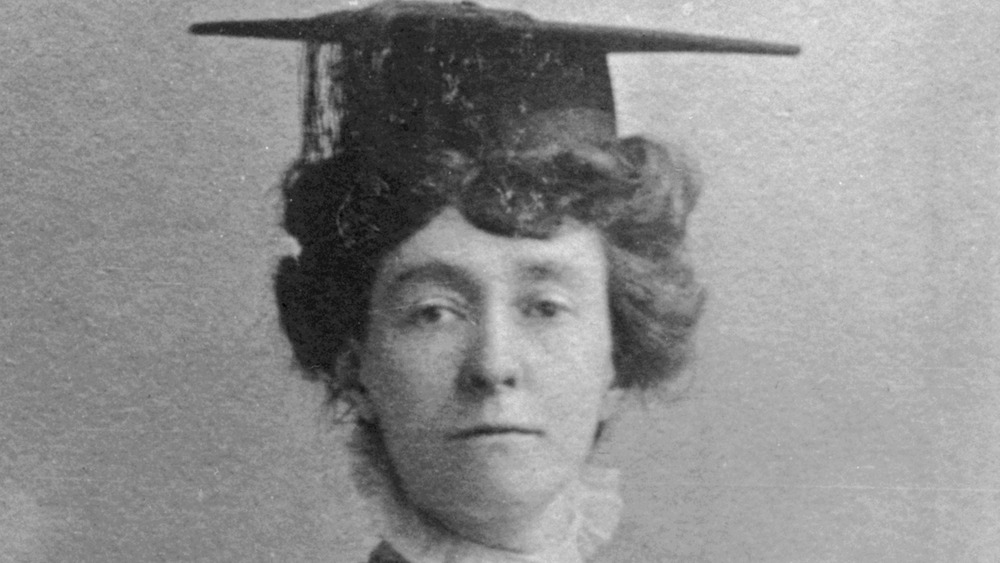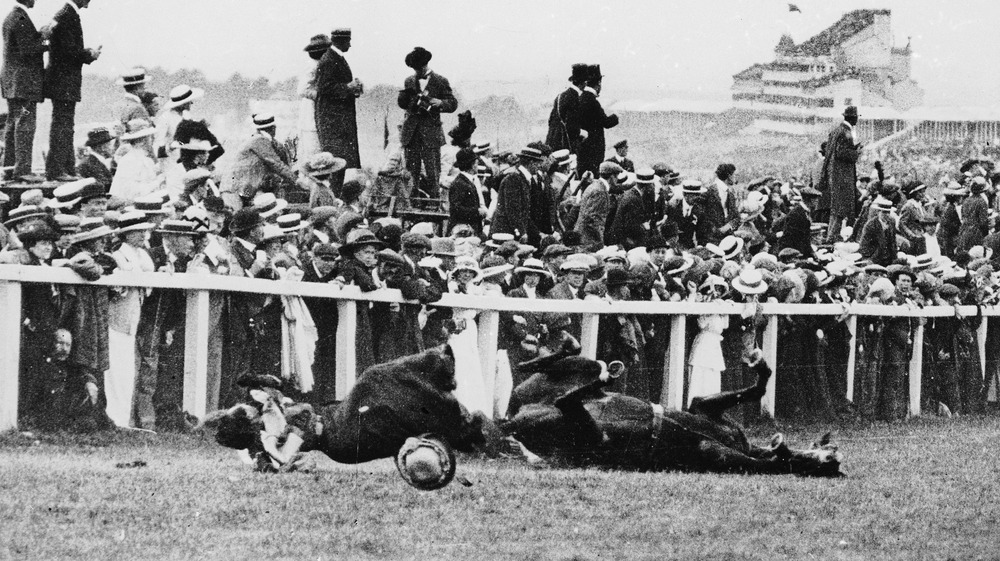The Tragic Death Of Suffragette Emily Davison
On June 4, 1913, 40-year-old suffragette Emily Davison attended the Epsom Derby and made a decision that would end her life and go down in history. She snuck under the railing at the racecourse and walked directly onto the track as racehorses sped towards her. She collided with Amner, the royal racehorse owned by King George V, fell under the horse's hooves, and lost consciousness. She was sent to the nearby Epsom Cottage Hospital, where she died of her injuries four days later.
Despite the event's significance, it has baffled historians and sparked conflicting theories for more than 100 years. According to The Guardian, Davison "has been saluted by some as a brave martyr and attacked by others as an irresponsible anarchist." The tragedy raised questions about her intentions: Was she was simply trying to cross a track she believed to be clear? Did she aim to pull Amner down? Did she intend to get herself killed? The 2017 Channel 4 documentary Secrets of a Suffragette, reviewed by The Telegraph, dove into and shed light on these theories.
A team of investigators analyzed images of Davison's actions for the documentary, concluding that the activist was not trying to pull Amner down, but instead was trying to attach a scarf to the horse's bridle.
Theories about Emily Davison's death have evolved over time
According to The Guardian, "historians have suggested that Davison was trying to attach a flag to King George V's horse and police reports suggested two flags were found on her body."
Historians have also suggested, per The Guardian, that Davison was seen "practicing" at grabbing horses alongside fellow suffragettes prior to the race, and that the group "drew lots to determine who should go to the Derby." This supports the theory that Davison's intention was to attach a flag to the horse in order to make a political statement.
The study also found that, prior to stepping foot on the track, Davison was "closer to the start of Tattenham Corner," which gave her a clearer view than previously believed. It's possible, then, that Davison could have deliberately singled out the royal racehorse as a target. The fact that she had purchased a round-trip ticket to the race, and reportedly planned to vacation with her sister shortly thereafter, suggests that she did not plan to kill herself that day.
While the consequences were deadly, Davison's message was a powerful one that is still being discussed over a century later. "It is hugely significant as a moment in history," Secrets of a Suffragette documentarian Clare Balding said (via The Guardian), "a moment that absolutely sums up the desperation of women in this country who wanted the vote."

